Applied Aesthetics: The Art Of Seeing
A visual signature is a sought-after icon. Think of certain visual images, and the name of an artist often comes to mind. All we have to mention are sunflowers to evoke Van Gogh. An American flag might recall Jasper Johns, a fragmented violin, Picasso. The world of retail is more circumscribed by geography and culture than the art world, but within the borders of experience, geographic and cultural, certain merchandise arrangements and architectural elements call retailers to mind.
Manufacturers and retailers make major efforts to distinguish themselves from their competitors. The management and staff of these companies bear the responsibility to uphold these images, to maintain the consistency of branded value in the eyes of customers.
Upon Entering
Customers make a quick value and style assessment based on merchandise and the physical surroundings. As shoppers progress further into the space, these first intuitive impressions are reinforced or diminished. Customers are generally non-verbal, but their reactions are measured by very practical means. Did they buy? Where did they buy it, assuming they can find it? Was their experience so good they wish to return?
These expectations are created at the first instant of approach and entry by sensory signals (sight, sound, smell, touch and taste) or even by a friendly greeting. By recognizing the patterns that determine decision making in each surrounding, a retailer and its staff may coax a positive attitude from its customer audience.
The first issue customers consider is the price/value/exclusivity balance created by the stock-to-space ratio: The fuller the appearance of stock to space, the greater the value. Less stock to space, the higher the price and the exclusivity. This is true from fashion boutiques to hypermarkets. When the anticipated balance seen is not what was expected, customers have to adjust. Merchandise presentation should create a factor of trust that the perceived value is there regardless of price.
The entry area is similar to a foyer, with suggestions of promotional and seasonal product. After entering, shoppers should ideally pause, think and move to areas you want them to examine. Avoid overwhelming product presentation: Give customers a chance to adjust to the entry, lighting, temperature, aroma the intangibles that set the attitude prior to touring the selling space.
Consumer Stimuli
The actual activity of a selling space can alter a customer’s perception of acceptability. To put the following commentary into an aesthetic framework, let’s take the store space itself as an abstraction: Consider selling areas as living, 3-dimensional, colored sculptures. They breathe and change proportion as the stock-to-space balance is adjusted by customer sales and staff maintenance.
The terminology of art is applicable to commercial space. Proportion, movement, focus, depth, color, light, texture, mass, shape and line are described in essentially the same language. We must also add one more factor to this scene one that may be unique to retail and not art. The addition of people in movement is part of the stimuli package.
A neatly arranged area with sufficient merchandise marked down in a reputable store but without customers may inspire only a mute, negative response. On the other hand, a space that is not well maintained with merchandise left untended after customer handling but with a busy check-out line will probably encourage further inspection and a herd instinct toward buying.
Our eyes cannot focus on multiple images as a camera can. No matter how separated from the object or the distance from object to object, we can only bring into focus one image at a time. This is an important fact for merchandising: One image can set a tone for or summarily destroy a display.
The Customer Is Always Right
Customers will visually and physically move to the right in any given space about 90 percent of the time. Some exceptions may be a customer who knows from previous visits that the desired product is located to the left or if there happens to be an odd architectural configuration. My experience has shown that the movement to the right for sighting and body movement is observably similar from location to location. Being left or right handed does not affect this tendency nor does geography or culture.
How does this assist the retail storeowner and planner? The right of the entry should contain one of the key presentations and lead the customer from entry through related merchandise to the key items. The key items are placed within the first 25-30 ft. of the entry, generally at a 45° angle from that point. Ninety-degree turns are too sharp for easy movement. This placement is a result of studying real customers and their eye movements.
The artist-merchant uses merchandise to assemble a series of vignettes that leads the eye to the key items in the assortment. Add to these vignettes a bit of humor or surprise and customers will enjoy discovery and the shopping experience. Constantly changing these vignettes with basics or fashion imparts a feeling of freshness to the assortment.
Newness has become synonymous with stylishness. The truth of this has been brought home by stores that will bring in new key assortments daily or even hourly. Almost regardless of the product, the idea of presenting a current image grows more and more essential. The ability to carry out such a seamless philosophy reflects on the comprehensive teamwork of the entire staff.
Basics Or Bust
Getting the basic, non-markdown item in front of the customer and glamorizing it is the key to the retail business. After seeing new seasonal or promotional merchandise, the item customers should see next is the one with a history of being the best selling in the category. Many times the best seller is a standard item, a destination article for the customer, and is happily also the signal-identifying item for the store. People have particular tendencies to name a product and think of the store at that moment. That is the ultimate signature.
Presentation. The presentation of basic items with a degree of drama is the difference between successful and less-successful stores. Sensory stimuli working together, such as color, mass and brightness, and creating positive responses is the most powerful selling tool we have. And that includes the excitement of finding the best at the lowest price.
Distance traveled. Distance traveled is a better measure of sales than time spent. Artistic placement and item presentation sponsor customer walking and viewing. Without walking and seeing a seductive presentation to move toward, we can detect customer frustration in the loss of time. Consumers cannot tell you how long they shop when they are buying and enjoying themselves. However, when not finding a specific item or not being enticed to walk around a store, time spent becomes quite recognizable.
Department penetration. De-partment penetration is a necessity. Rent is paid equally for all space, and though the aisle merchandise will tend to sell faster, the ultimate success comes from selling products at the back. While walking through and around other merchandise, the customer sees more stock, and even if they don’t buy, they will see the merchandise on the back of the fixtures when exiting. Customers also tend to shop more deliberately off the aisle. Remember, the aisle is architecturally designed to be the customer’s territory. The rest of the department belongs to the merchant.
Drawing attention. After setting the key merchandise, presentation specialists know how to draw the customer’s attention to other groups of merchandise in the assortment. Eyes move to specific areas of the display, focusing on three issues: The brain processes images automatically to make our eyes move to the right, to height and to the light by animal instinct. A visual merchant uses this information to actually anticipate and control eye movement, making the client focus on point by desirable point of the display.
Layering
Sequence of presentation leads the eye and the customer. From front to back and back to front, there is a rhythmic movement of stock set on fixtures. The merchandising terminology is called layering. The rhythm can be staccato or free flowing, changing height and mass. It is a combination of shapes in repetition, a balance between void and solid, between color and line, from low to high. Visual merchandising creates physical space relationships using stock in proportionate balances to show coordinated items and encourage multiple sales. The spatial organization leads the eyes around the department in a pleasing sequence.
Depth
Depth has several different meanings, each exemplified by visual standards. The following are the meanings of depth in the retail industry: depth of stock, depth of department, depth of understanding and depth of commitment.
Depth of stock. Each store in different economic modes and locations depends on stock levels to show and sell. These levels range between single-item samples in high-fashion, exclusive boutiques to quantities that relate to warehousing.
Depth of department. Approximately 15-30 ft. is the distance from the aisle to the wall that is easiest to set up and maintain. Deeper than that and you’ll need too many different fixtures to hold stock, making the area less penetrable without increasing the width of the primary and secondary aisles. In deep departments, there are too many variables and too much of an assortment to clearly point to one or two main items.
The depth of the department should allow for a feature presentation, a center department for multi-purpose use and a wall for a focal point with a strong display of merchandise and signature for the season. Deep departments tend to swallow center floor and wall merchandise, and the stock becomes old looking too fast. There is a ratio to customer traffic, item sales and age of stock: Shallow departments with high customer traffic sell more product than deep departments with the same stock.
There are many other retail situations that use large, open floor spaces that are not bordered by walls, where the vista from one point to another can be well over 100 ft., such as greenhouses, warehouses, some big box stores, etc. The issue of merchandise placement and adjacency becomes one of intermittent rhythms of height, air space and clearly defined traffic patterns. The height of key merchandise displays is the focus point of a category within a department without walls.
Depth of understanding. This is measurable. The level of retention and the ability of the staff to interpret and apply the visual principles determine the standard of success. The depth of understanding starts with the staff’s ability to absorb the initial principles of customer behavior and the aesthetics of presentation. With this basis, I have never been disappointed in the creativity of an entire staff. Individual sense of professional pride has a profound impact on mutual respect between the office and the store staff. But staff also refers to senior management. Their participation with approval and respect for work done by colleagues is the sine qua non of creative effort.
Depth of commitment. It sounds abstract, but commitment shows and it’s recognizable. The depth of commitment I look for comes from building a mutual appreciation and recognition of a team effort. It shows presentation, freshness, neatness, clarity and the activity. Customers sense it and want to share in it, especially if it is fun, almost as much as they want to buy merchandise. The interaction and the final impression that a committed staff creates is the image, the signature and the branding of that store.

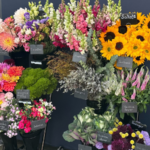


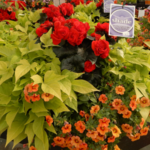

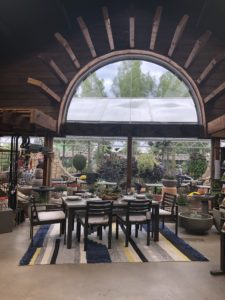

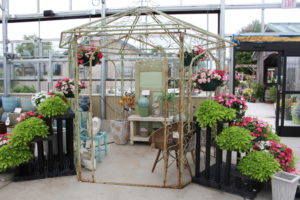
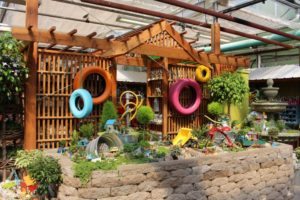
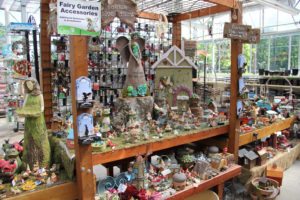
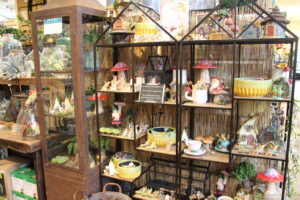
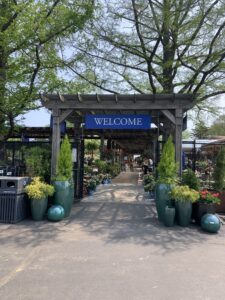


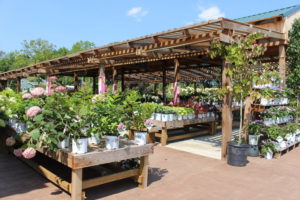

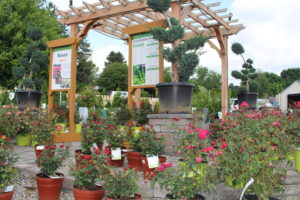
 Videos
Videos





